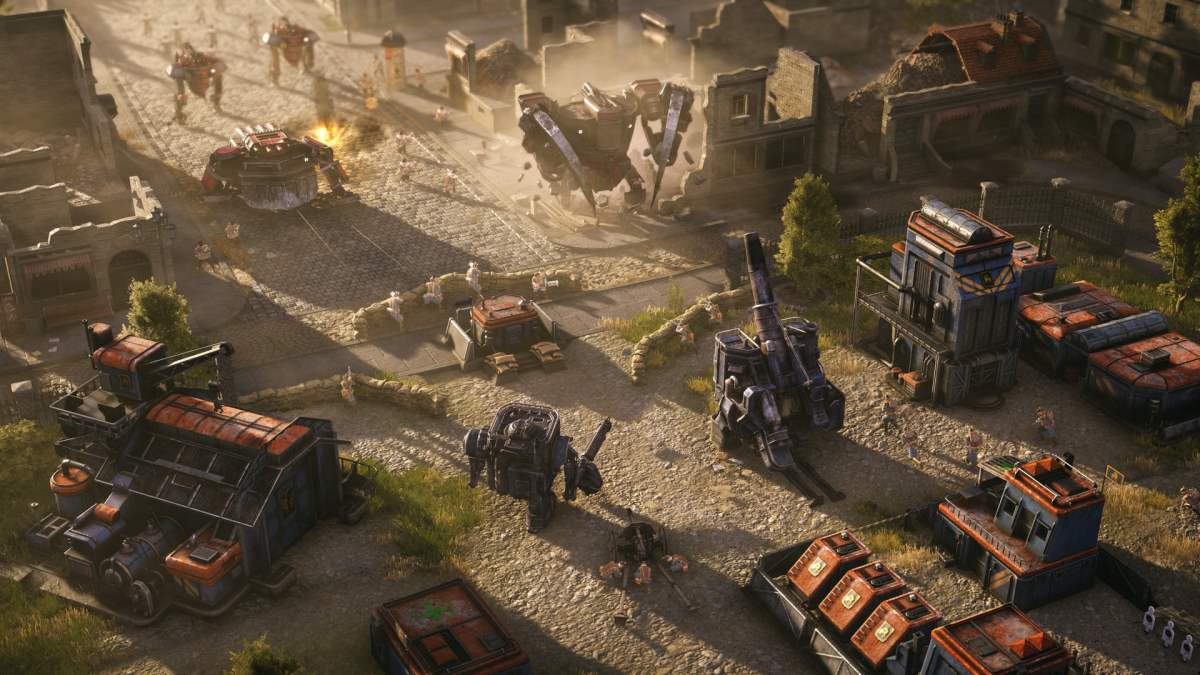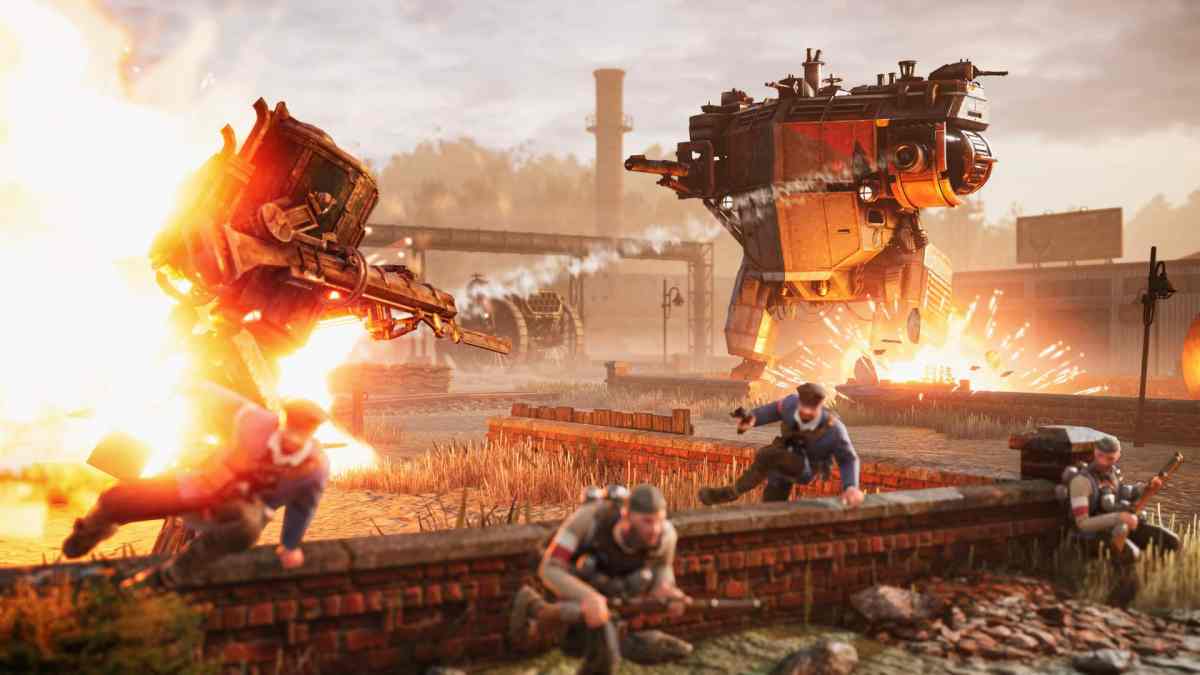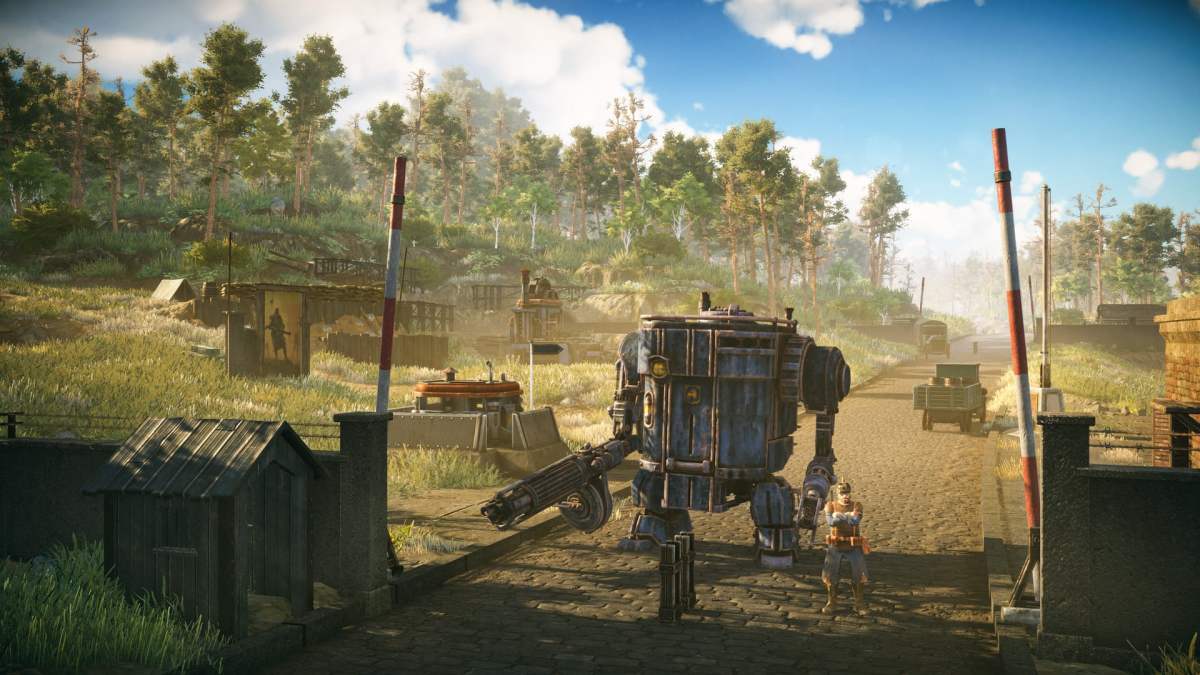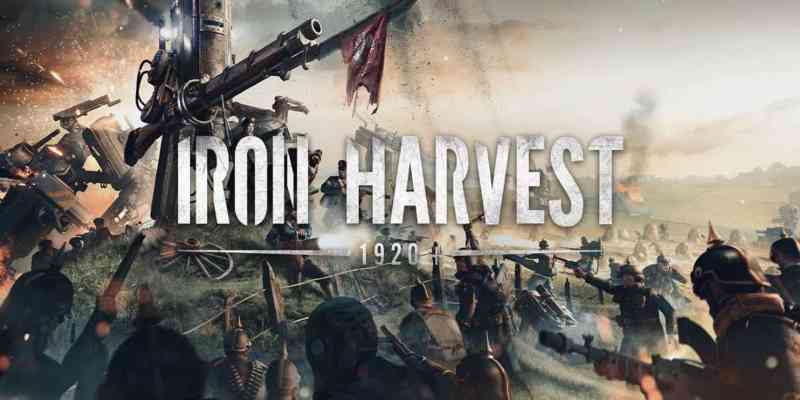Iron Harvest is the latest release from KING Art Games, a small German developer responsible for point-and-click adventure games such as The Book of Unwritten Tales and the RTS Battle Worlds: Kronos. The game came to life following an extremely successful Kickstarter that aimed to give players what they really want in a modern RTS, and the final results more or less fall in line with that.
The game takes place in an alternate history post-war 1920s created by Polish artist Jakub Różalsk — known as the 1920+ universe — where great scientific discoveries have led to the development of mechanized war machines. Fans of the tabletop board game Scythe will find the early 20th century European setting quite familiar. Heck, the main character in Iron Harvest’s campaign even has a bear companion.
The first campaign follows the life of Anna Kos, a young girl from the Polanian village of Zalesie. While her village enjoys peace in the years following the Great War, soldiers from Rusviet show up one day to capture her father, who apparently has been working on technology to counter the mechanical war machines used in the Great War. As a woman, she is not expected to participate in the fight to protect her village, but she takes up her rifle and employs the help of those around her to rise up against the enemy — including that of a bear she raised after its mother was killed.
The writing works well as a linking device between each fight. The maps themselves have interesting scenery and themes, with new and exciting objectives that escalate with the war and each of the three plots. The three separate main stories all center around different heroes of the war, each with their own storyline and influence on the outcome of the war. You have to play them in order, but the game takes this into consideration, continuing to add more challenges to the campaign instead of resetting the difficulty back when you move onto the next character.
Iron Harvest includes a lot of the usual RTS gameplay staples: Players lead a wide variety of units into battle against the enemy, utilizing a range of environments and tactics to defeat other squadrons of enemy combatants. Each chapter or mission consists of clearing a single map of objectives. Each map will have a main storyline objective, along with some side missions that can be cleared for extra rewards to make the main mission easier.

Clearing the side objectives can certainly help make the game easier, but they aren’t a sure tactic to defeating the enemy. Even with the bonus resources and squadrons, it’s still possible to get rolled by the AI if you fail to approach the situation correctly. Rushing headlong in with a large array of units and gun power doesn’t mean an easy win.
Iron Harvest emphasizes stealth and formation far more than a regular RTS. Usually an RTS victory relies on who can build an army faster and gather resources efficiently. Here, however, not letting the enemy know you are flanking them is far more critical than overwhelming the enemy with sheer numbers. Iron Harvest is more about the act of warfare and the role individuals have on the battlefield.
Things like cover and environmental factors can all be used against the enemy combatants for advantages. Terrain and buildings can also be blown apart, so cover is never guaranteed. The battlefield is constantly changing, so having tighter control over a small number of squads is actually more useful than having an entire army for reacting to the frantic changes the game throws at you.
The missions are actually pretty engaging, with each having a different custom map, focus, mission objective, environment, and even mechanics added as you progress. The levels get more and more difficult, but the curve keeps you improving at the same rate.

The units themselves are noteworthy and a key element of Iron Harvest. Instead of simply having large swathes of units, the game presents you with smaller, more diverse squads that can adapt to situations as they arise. Units gain ranks by participating in combat. As units rank up, their basic stats increase along with unlocking various special abilities such as a piercing shot that can penetrate cover or a passive heal that activates outside of combat. Hero units begin with their own unique ability that is tied into their specific identity and specialization. Squads can change class at any time by picking up dropped weapons from enemies or weapon crates found all over the maps, changing their basic look, firepower, and available abilities.
Hero characters work much the same as most RTS hero characters, acting as a whole squad with special abilities and the same manpower. These abilities can be used to take advantage of certain scenarios but come with some hefty cooldowns to balance them out.
Resource gathering also works a bit differently, with medical supplies found across the map that heal a wounded unit back to health. These supplies cannot be stored and will be used up in one go, so it’s best to save them for later on when your units are quite low. Destroyed mechs can be salvaged for scrap and utilized by engineer squads to repair your own mechs or even to build defenses for holding a position. Scrap can also be found scattered across the map or as a reward for completing side missions.
Graphics are a bit rough around the edges, with the textures occasionally dipping out of existence, but the majority of the time you spend fairly zoomed out so it only really becomes pronounced during the rare cutscene here and there. When cutscenes do occur, they are relatively short and to the point. The game mixes in some fake black-and-white war footage as well, splitting up the need for too many in-engine cutscenes.

The voice acting takes some getting used to, with the voice actors clearly attempting their best mix of European accents all bundled into one. The units also seem to whisper affirmatives back to the player when ordered to do something. These whispers sound eerily close to your ear, like some kind of commander simulation ASMR. However, this rapidly changes when the battle grows more intense. Under heavy fire, characters yell and explosions can be heard in all directions. There’s a fair amount more nuance to the sound design than there really needs to be, but if that’s your thing, you’ll probably really enjoy it.
The ability to play this game in co-op mode is one of the few aspects that would have really helped Iron Harvest stand out against other recent RTS games, like Warcraft III: Reforged and Age of Empires II: Definitive Edition. Unfortunately, while this aspect was promised in the initial Kickstarter campaign and promoted on Steam, the build of the game I played did not have this feature. Were it included in the base finished project, it would have made the game more enjoyable, allowing players to balance out the frantic gameplay more and gain a better sense of control over the battlefield.
Lastly, one thing to keep in mind is that for some strange reason, the pause button is defaulted to the pause key on PC, so make sure to check your settings when starting the game to map it to a more convenient button, because you will be reaching for it a lot.
While the game is certainly not perfect, for the developers’ second attempt at an RTS, Iron Harvest has a lot of potential. Once the multiplayer, competitive, and co-op features are added, Iron Harvest is sure to become a staple of the RTS genre.
